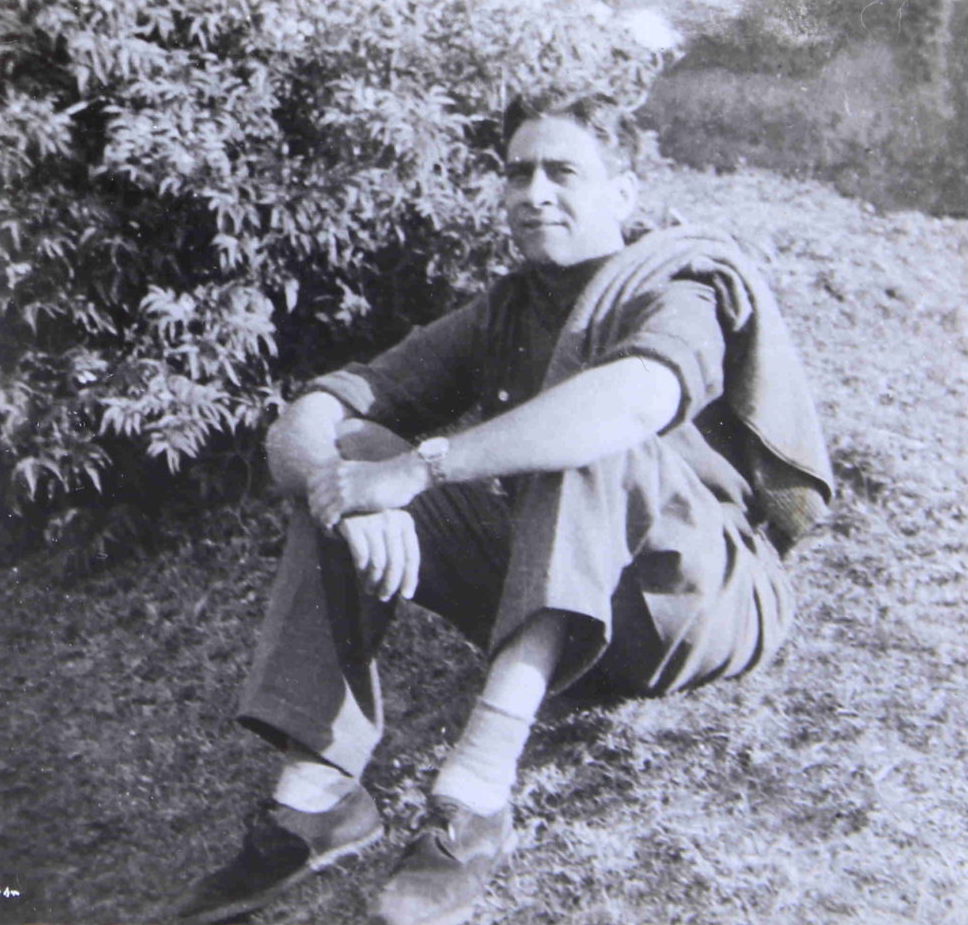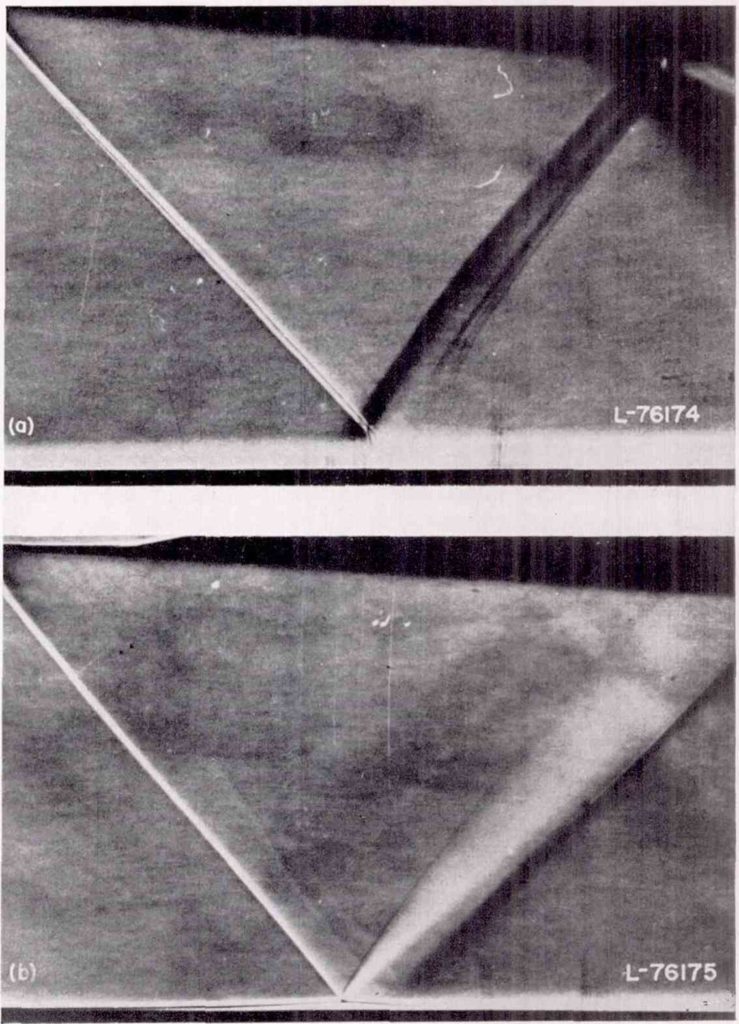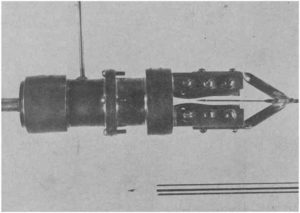
It was in 1946 that Dhawan arrived at the Guggenheim Aeronautical Laboratory of the California Institute of Technology (GALCIT, now Graduate Aerospace Laboratories), wanting to work with Hans Liepmann. But the Indian students Liepmann had worked with until then had given him the impression that “perhaps the select group that came to Caltech from India had prejudices against manual labor and essential, but not highly intellectual and glamorous, routines.”
“I have often mused about the bifurcation points in one’s life,” wrote Liepmann, recalling this episode in his obituary of Dhawan, “the times when a small and sometimes even unwelcome choice of alternatives results in major changes in one’s future. One of these bifurcations (in, I believe, 1946) resulted in my meeting Satish Dhawan.”
He did take Dhawan as his student, who impressed him immediately. Dhawan joined Liepmann and another of his students, Anatol Roshko, in studying how shockwaves bounce off from a solid surface such as a wing. (Roshko later became the Theodore von Kármán Professor of Aeronautics at GALCIT, a position Liepmann once occupied. Roshko passed away in January 2017.) This was at a time when “supersonic flows and shock waves were still rather exotic phenomena”, as Roddam Narasimha, one of Dhawan’s earliest students put it. They were trying to observe the interaction of shock waves with a boundary layer when the boundary layer itself hadn’t been studied thoroughly in supersonic flows.
Dhawan joined Liepmann and another of his students, Anatol Roshko, in studying how shockwaves bounce off from a solid surface such as a wing
The boundary layer is a thin layer of fluid in contact with any object past which the fluid flows. Take, for example, the wing of a moving aircraft. The air surrounding it can be thought of as having many layers, each of which has a different flow velocity. The boundary-layer, first proposed by Ludwig Prandtl, is a thin layer of the air in contact with the wing; across the boundary layer, the flow velocity of air decreases to zero.

In their experiment, Liepmann, Roshko and Dhawan were interested in finding out if shock waves were reflected differently from a flat surface when the boundary layer on the surface is laminar versus when it’s turbulent. In the resulting paper, which “became widely known for its revealing and defining observations”, they reported a dramatic difference in the pressure distributions on the surface between laminar and turbulent flows. For laminar flow, they found that the effect of the boundary layer is felt even fifty boundary-layer thicknesses upstream of the shock, whereas for turbulent flow, it is felt over only about five boundary-layer thicknesses.
Dhawan next worked on a difficult problem which became his PhD thesis – measuring skin friction. This is the resistance that an aircraft wing, for example, encounters because its surface is in contact with the boundary layer of the air. Boundary-layer theory predicted this important parameter but no one had directly measured it. This was a problem that, according to Liepmann, was of “both fundamental and direct technical importance.”
Dhawan devised an experimental apparatus to measure local skin friction on a flat plate by measuring the force exerted upon a small part of the plate’s surface. This small strip was floated so that it could move freely. He then found the friction drag on it by measuring its deflection against the resistance of a spring by electronic methods. When he did this with turbulent boundary layers, he found that his observations agreed with the logarithmic expression proposed by Theodore von Kármán. However, in order to fit the data it required values of the constants that were different from the theoretical prediction. Dhawan made a few measurements at subsonic and supersonic speeds too and found that the skin friction coefficient was quite close to theoretical predictions. He then measured the skin friction coefficient in the region of transition from laminar to turbulent flow, noting that the results couldn’t be explained by steady transition, and that intermittent laminar/turbulent flow fit the observations better. Dhawan, however, did not conclude that his experimental results definitely agreed with theory. He was, in Narasimha’s words, “[i]ngenious in design, meticulous in execution and cautious in interpretation.”

For his PhD thesis, Dhawan devised an experimental apparatus to measure local skin friction on a flat plate by measuring the force exerted upon a small part of the plate’s surface
Dhawan came back to India after his PhD and joined IISc’s Department of Aeronautical Engineering in 1951. (The department was later renamed Aerospace Engineering.) Two years later, Roddam Narasimha enrolled in the department for a two-year diploma (equivalent to a Master’s) in aeronautics. He learned to love fluid dynamics in those two years, not least due to Dhawan’s influence. “Dhawan’s lectures were advanced, simple and elegant all at the same time,” wrote Narasimha in a memoir, “and quickly gave students a sense of confidence.”

In the labs, Dhawan was building the instruments necessary for research, including the first supersonic wind tunnels in India. With his students, he once rigged up a supersonic wind tunnel that, as Narasimha recalls, “ran on compressed air from two wartime surplus oxygen tanks from a Dakota [aircraft].” Dhawan’s labs had other custom-made “gizmos” that “somehow managed to convey an impression of both science and engineering.” In this period, Narasimha says, “I learnt how, with some ingenuity, one can overcome what seem like insuperable difficulties.”
This was an approach that Liepmann approved of. A tradition of scientific research on engineering problems was what GALCIT was about, with its research programme emphasising a solid grounding in the basic sciences. Theodore von Kármán, the first director of GALCIT, had envisioned it “as a center for the fusion of science and technology.”
After returning to IISc, Dhawan with his student Narasimha began studying what happens at the boundary between laminar and turbulent flow, motivated by certain problems they encountered in the design of the HF-24 aircraft. Specifically, they wanted to investigate if there was a sharp front separating turbulent flow downstream from laminar flow upstream. Howard Emmons of Harvard University had proposed that the laminar to turbulent transition happens at isolated points that give rise to turbulent spots. Rather than a “front” separating laminar from turbulent flow, this picture proposed “islands” of turbulence in a laminar sea. This implied that laminarity could exist both upstream and downstream from such turbulent spots, and that the spots, as they moved downstream and grew, eventually led to fully turbulent flow. The fraction of time that the flow was turbulent at any point on the surface was called the intermittency at that point. Emmons had a statistical theory that related this intermittency to the rate at which spots were born on the surface and their propagation characteristics.
In Narasimha’s words, “In a very real sense I think Dhawan established at IISc and – by example – elsewhere in the country a tradition of scientific research on engineering problems”
If this picture was correct, it would imply that laminar and turbulent flow coexist everywhere, in different proportions determined by the intermittency, which goes from zero to one as the flow progresses. A subsequent experiment by other researchers, while confirming Emmons’ ideas about turbulent spots, did not compare their intermittency measurements with Emmons’ theory. Finding this odd, Dhawan and Narasimha made measurements of their own that suggested that Emmons’ idea of spots being generated across the whole surface of the plate wasn’t correct. They concluded that the simplest way to explain the data from their experiments was to assume that all spots were created at one location a certain distance from the leading edge – but randomly in time, meaning that transition does not occur everywhere on the plate.
With these and other experiments, Dhawan pioneered experimental fluid dynamics research in India. In Narasimha’s words, “In a very real sense I think Dhawan established at IISc and – by example – elsewhere in the country a tradition of scientific research on engineering problems.”




